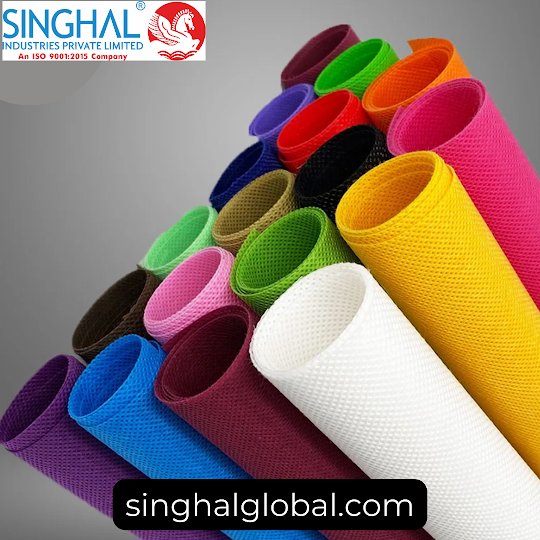Unveiling the World of PP Non-Woven Fabric and Spunbond Fabric: Manufacturing
PP non-woven fabric and spunbond fabric are versatile materials used in numerous industries for their unique properties and applications. In this article, we delve into the manufacturing process, applications, and best products of PP non-woven and spunbond fabrics. Whether you're in textiles, construction, or healthcare Singhal Industries - Manufacturer of Flexible Packaging Product, understanding these fabrics' features and benefits is essential for making informed decisions.
Understanding PP Non-Woven Fabric and Spunbond Fabric
PP Non-Woven Fabric Overview
PP non-woven fabric, also known as polypropylene non-woven
fabric, is a synthetic fabric made from thermoplastic polymer polypropylene. It
is produced by bonding fibers together using heat, chemicals, or mechanical
processes, rather than weaving or knitting.
Spunbond Fabric Overview
Spun bond fabric is a type of non-woven fabric manufactured
using the spunbond process. In this process, continuous filaments of
polypropylene are extruded, stretched, and bonded together to form a web-like
structure. Spunbond fabric is known for its strength, durability, and
breathability.
Manufacturing Process
PP Non-Woven Fabric Manufacturing
The manufacturing process of PP non-woven fabric involves the following steps:
Extrusion: Polypropylene pellets are melted and extruded
into long continuous fibers.
Web Formation: The extruded fibers are laid onto a conveyor
belt to form a loose web.
Bonding: The fibers are bonded together using heat,
chemicals, or mechanical methods to create a cohesive fabric.
Finishing: The fabric may undergo additional treatments such
as calendaring, embossing, or lamination for specific applications.
Spunbond Fabric Manufacturing
Spunbond fabric is manufactured through a similar process as PP non-woven fabric, with the main difference being the spinning and bonding of continuous filaments instead of staple fibers. The process involves extrusion, stretching, and bonding of continuous filaments to form a strong and uniform fabric.
Applications of PP Non-Woven Fabric and Spunbond Fabric
PP non-woven fabric and spunbond fabric find applications in various industries, including:
Textiles: Used in apparel, bags, upholstery, and linens for
its lightweight, breathable, and moisture-wicking properties.
Construction: Utilized as geotextiles, roofing membranes,
and insulation materials for its strength, durability, and water resistance.
Healthcare: Employed in medical gowns, masks, surgical
drapes, and wound dressings for its non-absorbent, hypoallergenic, and
breathable nature.
Best Spunbond Fabric Products
XYZ Spunbond Fabric: Known for its exceptional strength,
durability, and uniformity, XYZ spunbond fabric is ideal for various
applications, including agriculture, packaging, and filtration.
ABC Non-Woven Fabric: Renowned for its softness, flexibility, and non-allergenic properties, ABC non-woven fabric is perfect for use in medical and hygiene products such as diapers, sanitary pads, and wipes.
Conclusion
PP non-woven fabric and Best spun bond fabric are indispensable materials with diverse applications across industries. By understanding the manufacturing process, applications, and best products available, businesses can make informed decisions and find reliable suppliers for high-quality non-woven and spunbond fabrics to meet their specific needs efficiently and cost-effectively.
Frequently Asked Questions (FAQs)
Q: What are the advantages of using spunbond fabric over
woven fabric?
Spunbond fabric offers several advantages over woven fabric,
including higher strength-to-weight ratio, better breathability, and lower cost
of production. Additionally, spunbond fabric is more resistant to tearing,
stretching, and abrasion.
Q: Is PP non-woven fabric recyclable?
Yes, PP non-woven fabric is recyclable and can be melted
down and reprocessed into new products, reducing waste and environmental
impact.
Q: What are the key factors to consider when choosing PP
non-woven fabric for a specific application?
When selecting PP non-woven fabric, factors such as fabric
weight, thickness, strength, breathability, and chemical resistance should be
considered to ensure suitability for the intended application.


Comments
Post a Comment